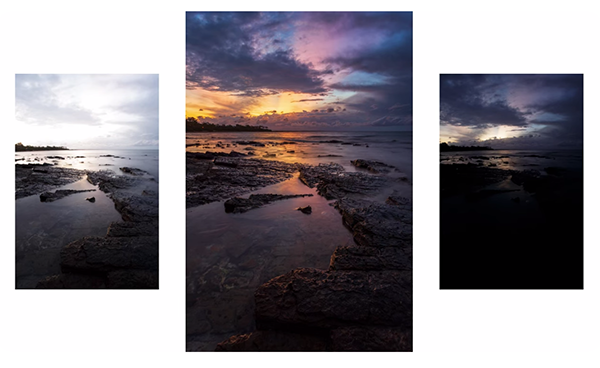Exposure Blending Basics for Outdoor Photos with Perfect Exposure (VIDEO)
One of the biggest challenges when photographing expansive landscape scenes is that they often include such a wide of tones that it’s almost impossible to achieve balanced exposures with a single shot in the camera. Today you’ll learn how to remedy this problem in the following beginners guide to exposure bending.
This easy-to-master technique involves merging multiple images of the same scene to create a single image with balanced tones from the highlights to shadows. In other words, this powerful approach enables you to capture a much wider dynamic range than a single exposure is able to achieve.
Instructor Neil Medland is a professional landscape photographer and image-editing specialist based in Australia. In this quick behind-the scenes episode you’ll watch him shoot the necessary images in the field, and then he walks you through a very basic exposure-blending technique using just two images that’s well within the skills of inexperienced Photoshop users.

His first shot was exposed for the sky which rendered the foreground extremely dark, while another shot exposed for the foreground blows out the sky. A quick look at the merged image illustrates the power of this technique that everyone should understand now.
Medland is working on the seashore with his camera atop a tripod under difficult light and he walks you through the necessary camera setting for the two shots he captures at different exposures. He carefully times the first image and snaps the shutter just as waves crash ashore. He says that “by focusing roughly halfway into the frame everything should be nice and sharp.”
He adjusts the aperture to achieve a half-second exposure for reasons that become obvious as he proceeds. He exposes his second shot for the sky by increasing the shutter speed until no clipping is evident in the sky. After repeating the process as the light becomes lower, Blue Hour is rapidly approaching, colors are beautiful, and Medland settles on two images that will make an ideal merge.

Now it’s time grapple with dynamic range and Medland demonstrates how exposure blending and “an extreme HDR blend” provide options for accomplishing the intended goal. In some complex situations it may be necessary to blend three or four images, but the process works exactly the same.
There are other helpful instructional videos available on Medland’s popular YouTube channel, so be sure to pay a visit and explore.
And don’t miss the tutorial we featured recently with another accomplished pro who demonstrates a quick post-processing hack for boosting the impact of reflections when photographing landscape scenes that include ponds, lakes, waterfalls, or streams.




















